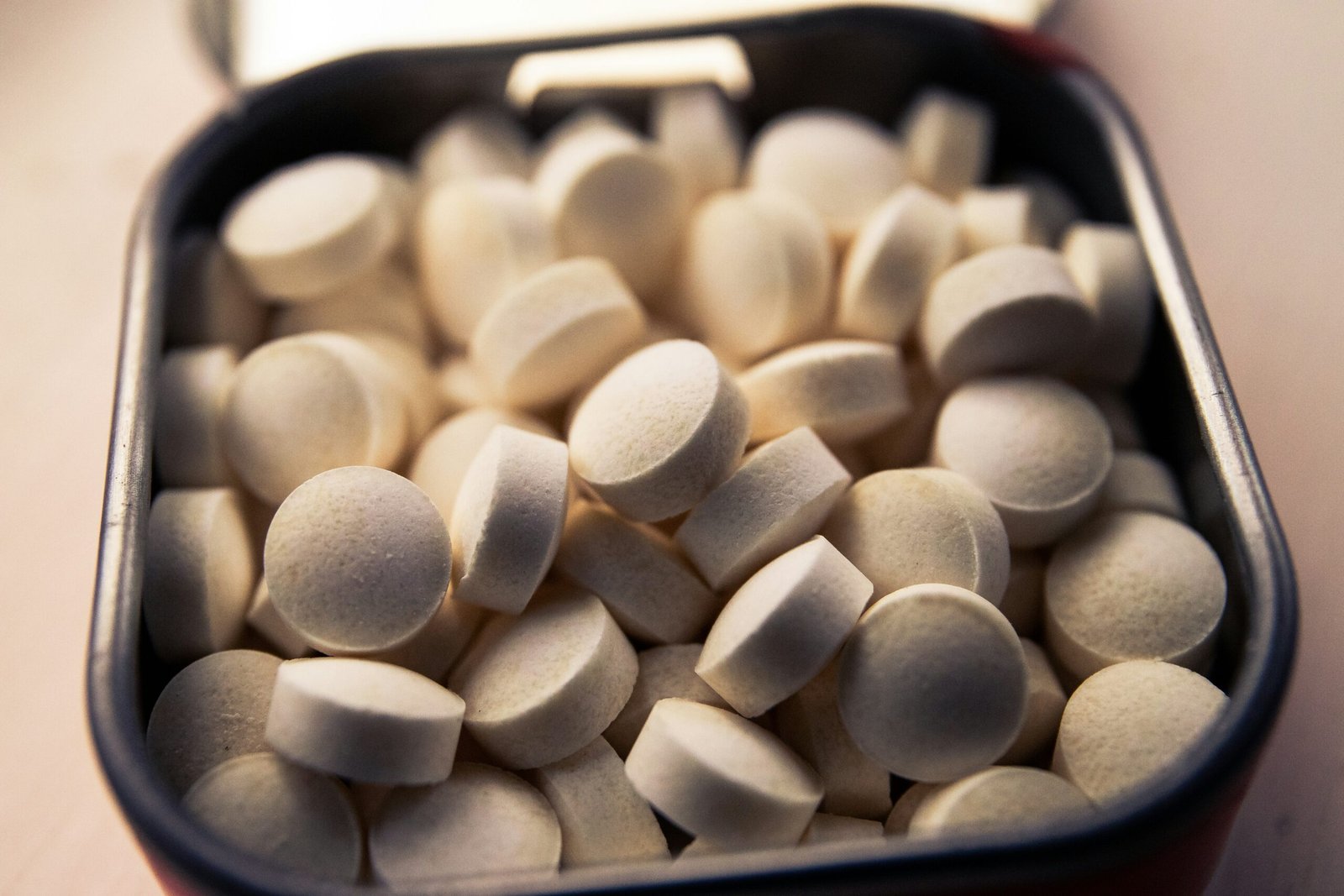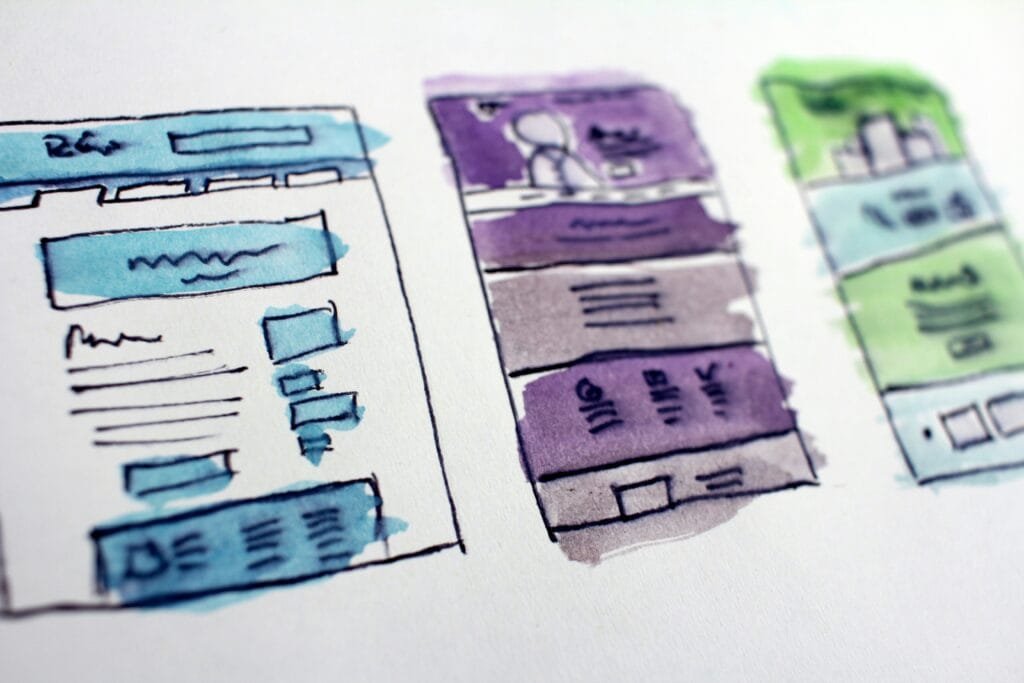Challenges in Pharmaceutical Marketing
Navigating the pharmaceutical industry presents unique challenges, especially in marketing. These challenges include decreasing ROI in development investment, competition and differentiation, and misaligned incentives and under-resourcing.
Decreasing ROI in Development Investment
The pharmaceutical sector faces a significant issue: reduced return on development investment. This leads companies to explore new disease areas and advanced technologies like cell and gene therapy. A prominent example is Gilead, which had to write down $820 million of its Kite Pharma acquisition due to increased competition in the anti-BCMA category.
| Company | Write-down ($ million) | Competition Area |
|---|---|---|
| Gilead Kite Pharma | 820 | Anti-BCMA |
Competition and Differentiation
The pharmaceutical industry deals with intense competition, especially with health system reforms imposing stricter access and pricing controls. Reduced exclusivity windows and reforms to control drug costs further complicate the landscape. Companies are exploring multiple paths to differentiate their products, focusing on quality, packaging, and delivery methods. For more details, refer to our section on pharmaceutical branding strategies.
| Challenge | Impact |
|---|---|
| Stricter Access Controls | Limits market entry |
| Reduced Exclusivity | Shortens product lifecycle |
| Drug Cost Reforms | Lowers profit margins |
Misaligned Incentives and Under-Resourcing
Misaligned incentives and under-resourcing further hinder marketing efforts in the pharmaceutical industry. Companies may prioritize expediting product launches over long-term relationship-building with healthcare providers and patients. Improved approaches are necessary to align marketing efforts with realistic resource allocation (pharmaceutical product launch strategy).
To address these challenges effectively, pharmaceutical companies need well-developed strategies that consider current market trends, technological advancements, and crucial differentiators. Please explore various approaches and tips within our articles dedicated to pharmaceutical marketing campaigns and healthcare content marketing trends.
Strategies for Product Differentiation
In the competitive pharmaceutical industry, differentiation is key for companies looking to stand out and capture market share. By employing effective strategies, pharmaceutical companies can set their products apart from competitors, increasing adoption and awareness. This section explores paths to differentiate products and provides successful differentiation examples.
Paths to Differentiate Products
Differentiation in the pharmaceutical sector can derive from a variety of sources. Incorporating elements like price, people (skills, experience), features, design, marketing efforts, availability, and production processes can set a product apart from competitors. Below are some primary paths to achieving product differentiation:
- Price: Offering competitive pricing or value-based pricing to appeal to cost-conscious consumers.
- People: Leveraging skilled and experienced personnel for R&D and patient support services.
- Features: Highlighting unique product features or benefits that solve specific problems.
- Design: Innovating in drug formulation, delivery mechanisms, or user-friendly packaging.
- Marketing: Developing compelling pharmaceutical marketing campaigns that educate and engage.
- Availability: Ensuring timely and wide availability of the products in various markets.
- Production Processes: Using state-of-the-art production methods that assure consistency and quality.
These differentiation strategies are crucial not only for major organizations but also for smaller players aiming to create value and ensure non-price competition.
Successful Differentiation Examples
Several pharmaceutical companies have successfully differentiated their products, creating significant market impact. Below are some notable examples:
Example 1: Gilead Sciences’ Focus on NASH and Cell/Gene Therapy
Gilead Sciences stands as an example of pivoting towards new disease areas like Nonalcoholic Steatohepatitis (NASH) and technological advancements like cell and gene therapy. Despite writing down $820 million of its Kite Pharma acquisition due to anti-BCMA competition, Gilead continues to focus on these promising areas.
Example 2: Strategic Outsourcing by Various Pharmaceutical Companies
Strategic outsourcing has been a valuable differentiation tool for multiple pharmaceutical firms. By outsourcing non-core functions, companies like GlaxoSmithKline and AstraZeneca have managed to reduce costs, access specialized expertise, and drive innovation. This focus on core competencies facilitates efficiency and enhances differentiation (QuintilesIMS).
| Company | Differentiation Strategy | Impact |
|---|---|---|
| Gilead Sciences | Focus on NASH, Cell/Gene Therapy | Market leadership in innovative therapies |
| GlaxoSmithKline | Strategic Outsourcing | Enhanced focus on core competencies, reduced costs |
| AstraZeneca | Strategic Outsourcing | Improved efficiency, access to specialized expertise |
By understanding and utilizing these paths and examples, pharmaceutical companies, R&D heads, and marketing managers can foster significant differentiation, driving product adoption and market competitiveness. For more insights on differentiation, visit our articles on pharmaceutical branding strategies and pharmaceutical product launch strategy.
Trends Shaping Pharmaceutical Industry
Understanding the trends shaping the pharmaceutical industry is critical for companies looking to gain a competitive edge. This section examines technological advancements, market performance and risk factors, and competition in biological targets.
Technological Advancements
Recent breakthroughs in the pharmaceutical industry reveal significant technological advancements. Key areas of progress include vaccine development, cancer treatments, GLP-1 drugs for obesity management, gene therapy for rare diseases, and treatments for complex diseases like Alzheimer’s (PwC).
Emerging modalities such as mRNA technology, antibody drug-conjugates, and gene therapy are becoming increasingly important. These advancements are crucial for tackling challenging health issues explicitly in oncology, immunology, obesity, Alzheimer’s, and cardiovascular diseases (ZS).
Market Performance and Risk Factors
The pharmaceutical market is influenced by several performance indicators and risk factors. Companies must navigate a landscape marked by constant scientific advancements and competitive pressures. Increasing competition among on-market drugs and rising R&D investment targeting smaller patient populations are notable trends (PwC).
A focus on scientific and portfolio innovation is driving market performance, but it also brings inherent risks. Investment in emerging technologies and early-stage drug development requires careful assessment of potential returns.
For a detailed market performance analysis, refer to our pharmaceutical market analysis.
Competition in Biological Targets
Competition in biological targets has intensified as pharmaceutical companies invest heavily in R&D to develop new therapies. Scientific advancements have led to more firms vying for the same biological markers, especially in high-impact areas like oncology and immunology.
Competition in Biological Targets
This table outlines the major focus areas and the respective advancements:
| Focus Area | Emerging Technologies |
|---|---|
| Oncology | Antibody Drug-Conjugates, mRNA Technology |
| Immunology | Gene Therapy |
| Obesity | GLP-1 Drugs |
| Alzheimer’s | Novel Alzheimer’s Treatments |
| Cardiovascular | Advanced Cardiovascular Drugs |
To stay competitive, companies are adopting new strategies and leveraging technological advancements to streamline R&D processes. For additional insights into competitive strategies, check out our article on pharmaceutical branding strategies.
By understanding these trends and adapting accordingly, pharmaceutical companies can align their strategies with market demands, ensuring sustained growth and innovation.
Key Strategies for Competitive Advantage
In a fiercely competitive pharmaceutical landscape, companies must employ robust strategies to gain a competitive edge. One of the main approaches includes reinforcing innovation, realigning R&D investments, and accelerating product development through AI.
Reinforcing Innovation
Innovation is the backbone of the pharmaceutical industry. To outperform competitors, leading companies are advised to reinforce innovation throughout their business models (PwC). This involves integrating digital transformation initiatives across the organization, from the C-suite down to operational levels. Embracing a culture of continuous improvement and innovation enhances the development of novel therapies and improves patient outcomes.
Key strategies for reinforcing innovation:
- Global Transformation: Adapting digital transformation globally, optimizing data infrastructure to meet both global and local needs.
- Cultural Mindset: Encouraging a cultural shift that embeds digital capabilities within the company, involving collaborative changes within teams to focus on omnichannel activities and cross-functional collaboration.
- Lifecycle Management: Developing product teams that oversee the entire lifecycle of digital products, even post-launch, enhancing their value and ensuring successful commercialization (Fierce Pharma).
Realignment of R&D Investment
Realigning R&D investment to focus on “white space” opportunities—areas with unmet medical needs or little competition—is crucial for maintaining a competitive edge. This strategic focus allows companies to pioneer new treatments and address gaps in the market.
Key considerations for R&D investment realignment:
- Market Analysis: Conduct comprehensive pharmaceutical market analysis to identify white space opportunities.
- Resource Allocation: Reallocate resources to prioritize projects with the highest potential for innovation and market impact.
- Cross-Functional Teams: Break down internal silos to enable cross-functional collaboration among technology, data science, medical, clinical, and commercial teams (Fierce Pharma).
Accelerating Products through AI
Artificial Intelligence (AI) plays a transformative role in accelerating product development. By leveraging AI, pharmaceutical companies can enhance drug discovery, optimize clinical trials, and reduce operational costs.
Key applications of AI in the pharmaceutical industry:
- Drug Discovery: AI algorithms can predict the efficacy and safety of potential drug candidates, significantly speeding up the drug discovery process.
- Clinical Trials: AI can optimize clinical trial design, patient recruitment, and data analysis, leading to faster and more efficient trials.
- Operational Efficiency: Streamline operations and lower costs by integrating AI-driven solutions across various functions.
By implementing AI across the product lifecycle, companies can bring innovative therapies to market faster, improving their competitive positioning.
| Strategy | Description |
|---|---|
| Reinforcing Innovation | Enhancing digital transformation, encouraging a cultural shift, and lifecycle management. |
| Realignment of R&D Investment | Prioritizing white space opportunities, reallocating resources, enabling cross-functional collaboration. |
| Accelerating Products through AI | Leveraging AI for drug discovery, optimizing clinical trials, and improving operational efficiency. |
To succeed in the competitive pharmaceutical industry, companies must adeptly combine these strategies to reinforce their market position. For further insights, refer to our articles on pharmaceutical product launch strategy and pharmaceutical branding strategies.
Leading Pharmaceutical Companies in 2023
Johnson & Johnson
Johnson & Johnson maintained its strong position in the pharmaceutical industry in 2023, reporting a significant financial growth in the fourth quarter. The company’s sales rose by 7.3%, reaching $21.4 billion compared to the same quarter in 2022. For the entire year, Johnson & Johnson accumulated an overall revenue of $85.2 billion. This impressive growth was primarily driven by key pharmaceutical products in the fields of oncology, immunology, and neurology. Major contributors included oncology medication Darzalex, immunology drug Stelara, and neurology treatment Spravato.
F. Hoffmann-La Roche Ltd
F. Hoffmann-La Roche Ltd also demonstrated resilience in the market, recording group sales amounting to Sfr 58.7 billion ($66.4 billion) in 2023. This represents a 1% rise at constant exchange rates, driven by successful therapies such as Vabysmo, Ocrevus, and Hemlibra. However, it’s worth noting that their diagnostic sales faced a decline due to a reduced demand for Covid-19 tests (Pharmaceutical Technology).
| Company | 2023 Revenue (in $bn) | Key Products |
|---|---|---|
| Johnson & Johnson | 85.2 | Darzalex, Stelara, Spravato |
| Roche | 66.4 | Vabysmo, Ocrevus, Hemlibra |
Merck & Co
Merck & Co reported robust sales in the fourth quarter of 2023, reaching $14.6 billion, marking a 6% increase from the same period in the previous year. Their overall sales for the fiscal year 2023 amounted to $60.1 billion, reflecting a 1% increase from 2022. This growth was predominantly driven by products in the oncology and vaccine segments, making Merck & Co a significant player in the pharmaceutical market.
Pfizer
Pfizer experienced a notable revenue decrease in 2023, reporting revenues of $58.5 billion, a 42% drop from the previous year. This decline was primarily due to a reduction in sales of Covid-19 related products. Despite this setback, the company achieved FDA approval for nine new products, which is expected to positively impact future performance (Pharmaceutical Technology).
AbbVie
AbbVie’s net revenue decreased by 6.4% in 2023, dropping to $54.32 billion compared to the previous year. This decline was largely due to aggressive competition from Humira biosimilars. However, the company’s neuroscience portfolio showed a promising 18.2% increase in global net revenues, reaching $7.72 billion, indicating potential growth in this therapeutic area.
| Company | 2023 Revenue (in $bn) | Change from 2022 |
|---|---|---|
| Merck & Co | 60.1 | +1% |
| Pfizer | 58.5 | -42% |
| AbbVie | 54.32 | -6.4% |
It’s clear that leading pharmaceutical companies in 2023 have faced various challenges and growth drivers. Key aspects such as regulatory compliance, robust pharmaceutical marketing campaigns, and strategic pharmaceutical branding strategies are crucial to maintaining a competitive edge in this dynamic industry. For more insights into staying ahead in the market, consider exploring our resources on pharmaceutical market analysis and seo for pharmaceutical companies.
Product Differentiation Approaches
In the highly competitive landscape of the pharmaceutical industry, effective product differentiation is critical for standing out in the market. Three main approaches to differentiation in product strategy are vertical differentiation, horizontal differentiation, and simple/mixed differentiation.
Vertical Differentiation
Vertical differentiation involves distinguishing a product based on measurable quality or performance metrics. Consumers perceive vertically differentiated products as superior based on specific attributes, such as efficacy, safety profile, or speed of relief.
| Measurement | Product A | Product B |
|---|---|---|
| Efficacy (%) | 95 | 85 |
| Time to Onset (min) | 15 | 30 |
| Side Effects (incidence rate) | 5% | 12% |
In vertical differentiation, providing clear, quantifiable benefits through clinical trials and comparative studies can significantly boost product adoption and sales. For instance, demonstrating a higher efficacy rate or faster onset of action can position a pharmaceutical product as the superior option in its therapeutic class. Explore more on pharmaceutical product launch strategy for strategic insights.
Horizontal Differentiation
Horizontal differentiation occurs when products differ in attributes that appeal to the personal preferences of consumers rather than objective quality metrics. These attributes might include delivery form, taste, or user experience (Orientation Agency).
| Attribute | Product A | Product B |
|---|---|---|
| Delivery Method | Oral Tablet | Injectable |
| Flavor | Berry | Mint |
| Dosage Form | Capsule | Liquid |
With horizontal differentiation, the aim is to cater to diverse patient needs and preferences. For example, offering the same medication in multiple dosage forms such as tablets, liquids, or injectables can appeal to different patient groups. Customized marketing campaigns can be essential here, focusing on the unique attributes and benefits of each product variant. Learn about successful pharmaceutical marketing campaigns for more effective strategies.
Simple/Mixed Differentiation
Simple, or mixed differentiation, combines elements of both vertical and horizontal differentiation. This approach addresses both objective quality improvements and subjective consumer preferences (Orientation Agency).
| Product Attribute | Improvement |
|---|---|
| Efficacy | Increased to 95% |
| Delivery Method | New transdermal patch option |
| Side Effect Profile | Reduced to 5% |
In simple/mixed differentiation, a pharmaceutical product can be improved in both its clinical effectiveness and its user-friendly attributes. For example, enhancing drug efficacy while introducing an innovative, pain-free delivery method like a transdermal patch can create a compelling market advantage. The combination of these strategies can aid in robust pharmaceutical branding strategies.
Effective differentiation strategies are vital for gaining a competitive edge in the pharmaceutical industry. By leveraging vertical, horizontal, and simple/mixed differentiation techniques, companies can uniquely position their products, boost market performance, and drive adoption among healthcare providers and patients alike. For an in-depth analysis of the industry trends and competitive strategies, refer to our pharmaceutical market analysis.
Importance of Regulatory Compliance
Navigating regulatory compliance is essential in the pharmaceutical industry. Staying aligned with evolving regulations helps ensure patient safety and maintain market competitiveness. This section delves into the impact of regulatory changes and the importance of pharmacovigilance and safety concerns.
Impact of Regulatory Changes
Regulatory changes affect numerous facets of the pharmaceutical industry, ranging from drug development to market access. Companies must allocate significant resources to comply with new regulations, which can lead to delays in drug launches and increased costs.
| Impact Area | Description | Source |
|---|---|---|
| Drug Development | Requires extensive and rigorous clinical trials, including larger participant recruitment and longer trials. | Laboratorios Rubio |
| Manufacturing | Mandates compliance with stringent manufacturing standards to ensure quality. | Laboratorios Rubio |
| Market Access | Involves thorough evaluations for drug marketing authorization, including comprehensive trial data and post-marketing surveillance. | Laboratorios Rubio |
| Patient Safety | Enforces strict safety protocols during all phases of drug lifecycle, impacting time and cost. | Laboratorios Rubio |
Investing in regulatory compliance not only mitigates risks but also enhances trust among patients and stakeholders. Companies that excel in navigating regulatory landscapes are better positioned to bring innovative treatments to the market swiftly.
Pharmacovigilance and Safety Concerns
Pharmacovigilance involves monitoring the effects of pharmaceutical products to identify any adverse reactions promptly. This practice is critical for ensuring drug safety and efficacy throughout its lifecycle.
- Clinical Trials: Stricter guidelines mandate comprehensive data collection on drug effects, requiring additional time and participants (Laboratorios Rubio).
- Post-Marketing Surveillance: Continuous monitoring even after a drug is marketed to capture real-world effectiveness and potential side effects.
- Data Transparency: Regulatory bodies demand transparent reporting of all trial data to aid in the accurate assessment of a drug’s risk-benefit profile.
By prioritizing pharmacovigilance, pharmaceutical companies can not only meet regulatory requirements but also enhance their reputation for safety and reliability. Emphasizing these practices in marketing strategies (pharmaceutical marketing campaigns) and branding efforts (pharmaceutical branding strategies) can further solidify market positioning.
Regulatory compliance and pharmacovigilance are integral to the pharmaceutical industry’s competitive analysis. Staying compliant reduces the risk of costly penalties and product recalls, making it a vital strategy for maintaining a competitive edge in an ever-evolving marketplace.
Innovation Strategies for Market Competitiveness
In a highly competitive pharmaceutical industry, companies need to continuously innovate to stay ahead of the curve. Here are key strategies to enhance market competitiveness.
Improving R&D Spending
Increasing investment in Research and Development (R&D) is crucial for driving innovation and maintaining a competitive edge. Major pharmaceutical companies leverage increased R&D spending to foster incremental innovation in product improvements and resist competition from newcomers. Enhancing product stability, improving coatings for implants, and optimizing drug release actions are notable focuses.
- Strengthen Innovation Departments: Focus on disruptive product development and open innovation approaches to bring groundbreaking products to the market.
- Enhance Technological Capabilities: Invest in advanced technologies that enable more efficient and effective drug development processes.
According to A3P, companies that increase their R&D spending often see improvements in innovation metrics and competitive positioning within the industry. For more detailed insights on how to implement these strategies, visit our page on pharmaceutical market analysis.
Embracing Combination Products
Combination products, which integrate drugs, devices, and/or biologics, are gaining traction in the pharmaceutical industry. This integration offers numerous benefits, such as improved patient outcomes, greater convenience, and enhanced therapeutic effects.
- Innovative Combinations: Develop products that combine multiple treatments into a single application, streamlining therapy for patients.
- Collaborations and Partnerships: Work with technology companies and other pharmaceutical firms to co-develop combination products.
Embracing combination products not only meets patient needs but also opens up opportunities for market differentiation. Explore how these strategies can be effectively implemented in our pharmaceutical product launch strategy guide.
Enhancing Internal Efficiencies
Improving internal efficiencies is essential for cost reduction and faster time-to-market in the pharmaceutical industry. Enhancing processes governing business operations can lead to significant performance improvements and cost savings.
- Standardize Processes: Implement standard operating procedures to lower variability and ensure consistent quality.
- Optimize Information Flows: Improve communication and data sharing between departments to streamline operations.
- Utilize CMMI Methodologies: Enhance process maturity levels using models like the Capability Maturity Model Integration (CMMI), which lead to better performance.
Improvements in process maturity can result in reduced costs and faster development timelines, according to A3P. For more information on optimizing efficiencies, visit our resource on pharmaceutical branding strategies.
| Strategy | Benefits |
|---|---|
| Increasing R&D Spending | Drives innovation, resists competition |
| Embracing Combination Products | Improves outcomes, market differentiation |
| Enhancing Internal Efficiencies | Reduces costs, accelerates time-to-market |
Adopting these innovation strategies can empower your competitive positions and lead to sustained market success. For further insights, check our articles on pharmaceutical marketing campaigns and seo for pharmaceutical companies.





















